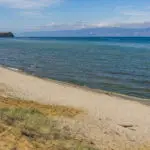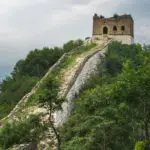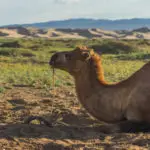Everything you need to know about climbing Lenin Peak in Kyrgyzstan. How to get there, the climbing route and a lot more are covered in my comprehensive guide.
Lenin Peak is often touted as one of the easiest and cheapest 7,000-meter mountains to climb.
Let me start right off by saying that Lenin Peak is by no means an easy mountain to climb. It isn’t technically challenging, but at altitudes above 6,000 meters, anything can happen.
I made a solo attempt on Lenin Peak in August 2019. I wasn’t successful – I turned back at about 6,000m just before reaching Camp 3. I’ll explain more about my personal climb later in this post.
Contents
- 1 A History of Lenin Peak
- 2 Getting to Lenin Peak
- 3 Lenin Peak Gear List
- 4 Lenin Peak Climbing Routes
- 5 The Razdelnaya Route
- 6 Solo Climbing Lenin Peak
- 7 Lenin Peak Acclimatization Itinerary
- 8 Lenin Peak Climbing Season
- 9 Lenin Peak Agencies
- 10 Lenin Peak FAQ
- 11 Resources for climbing Lenin Peak
- 12 Lenin Peak Wrap-up
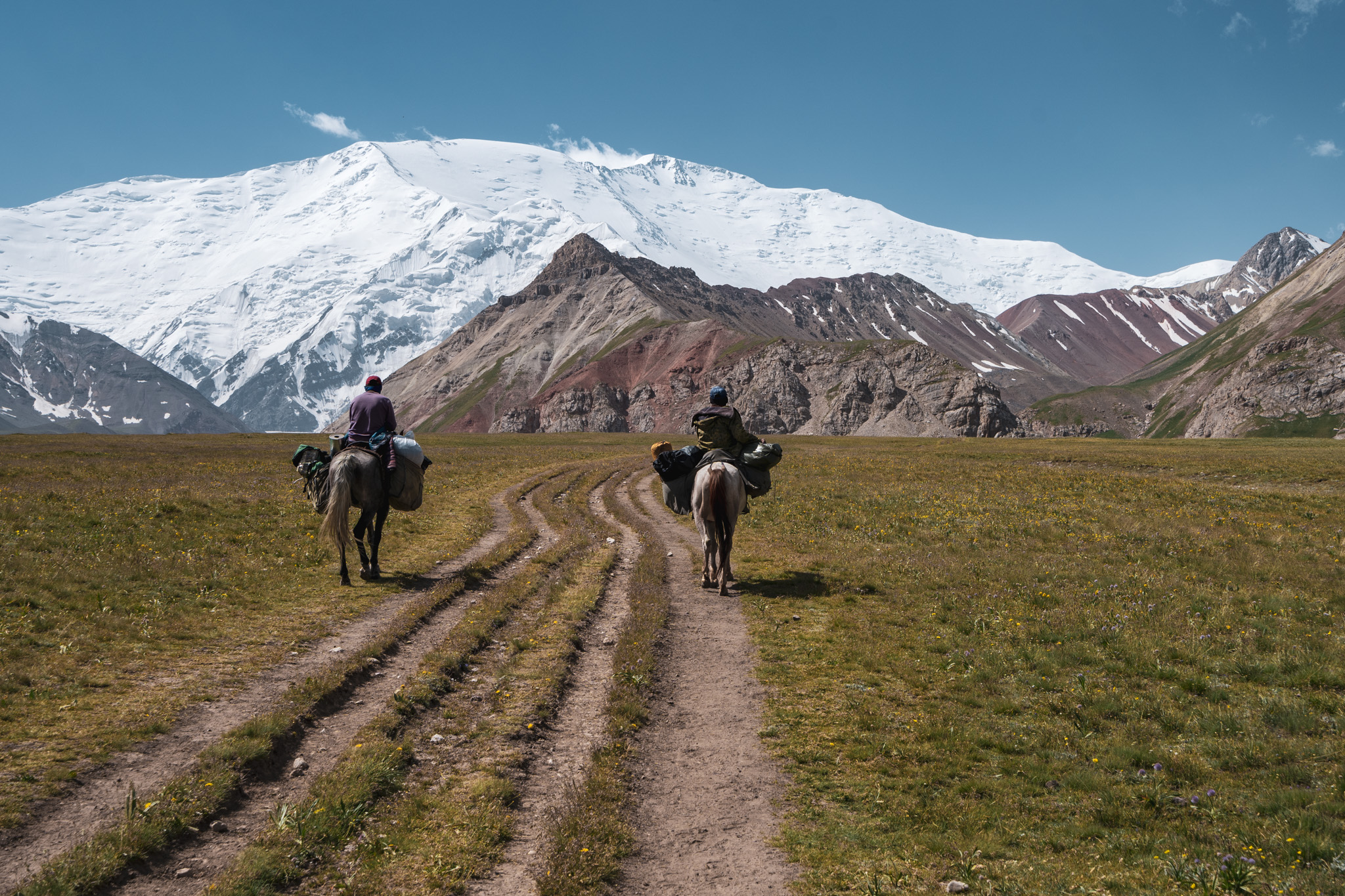
A History of Lenin Peak
Lenin Peak is the third tallest peak in the former Soviet Union and is one of the five snow-leopard mountains. The summit of the mountain has a metal statue of Vladimir Lenin’s head, a reminder of the peak’s history.
It’s also where the most deadly mountaineering accident in history occurred. On the 13th of July, 1990, an earthquake triggered a massive avalanche that completely buried Camp 2. In total, 43 climbers died that day on Lenin Peak.
Nowadays, Lenin Peak is one of the most popular 7,000 meter climbs in the world and one of the best ways to get experience at extreme altitude without much technical difficulty.

Getting to Lenin Peak
Lenin Peak is located in the far south of Kyrgyzstan, on the border with Tajikistan.
For such a large mountain, it’s actually quite easy to get to Lenin Peak. Base Camp (BC) is accessible by a bumpy dirt road from Sary Mogul, a small town in Kyrgyzstan’s Alay Valley.
But first, you need to get to Kyrgyzstan.
Flying to Kyrgyzstan
Most people who climb Lenin Peak fly into Bishkek. It’s the capital of Kyrgystan and has a decent international airport with direct flights to Dubai, Moscow, St. Petersburg, Tashkent, and Astana (or Nur-Sultan).
If you find a cheaper flight, you could also fly into Osh. It’s the second-largest city in the country and is home to an international airport with connections to Moscow, St. Petersburg, and Kuwait.
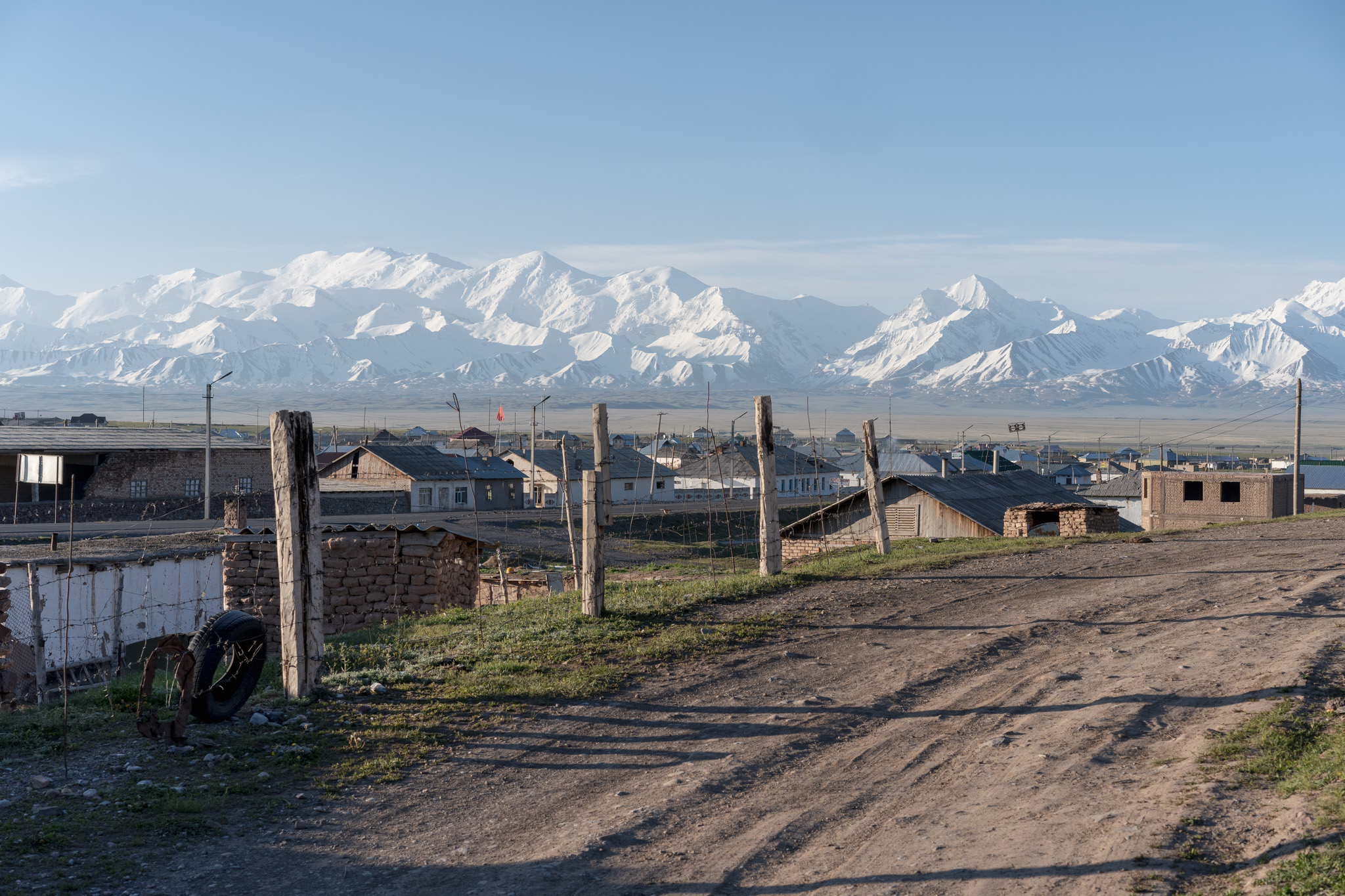
Getting from Bishkek to Osh
If you opted to fly into Bishkek, the next thing to do is to get to Osh. There are a number of local airlines operating daily flights on the Bishkek to Osh route, so just pick one and go for it. Prices tend to range from $30-50 depending on how far ahead you book.
Osh to Lenin Peak Base Camp
The drive from Osh to Base Camp is absolutely gorgeous. It takes about five hours in total, and during that time you’ll gain almost 3,000 meters in elevation.
At first, the road follows the gorgeous Gulcha River towards the Alay Valley. When you first drive into Sary Tash at the entrance of the Alay Valley, you’ll be blown away by the 6,000 and 7,000-meter mountains dominating the entire landscape.
From Sary Tash, the drive continues on well-paved road for another hour until the town of Sary Mogul. At Sary Mogul, you’ll turn off on a bumpy dirt road for the remaining hour-long drive to Base Camp.
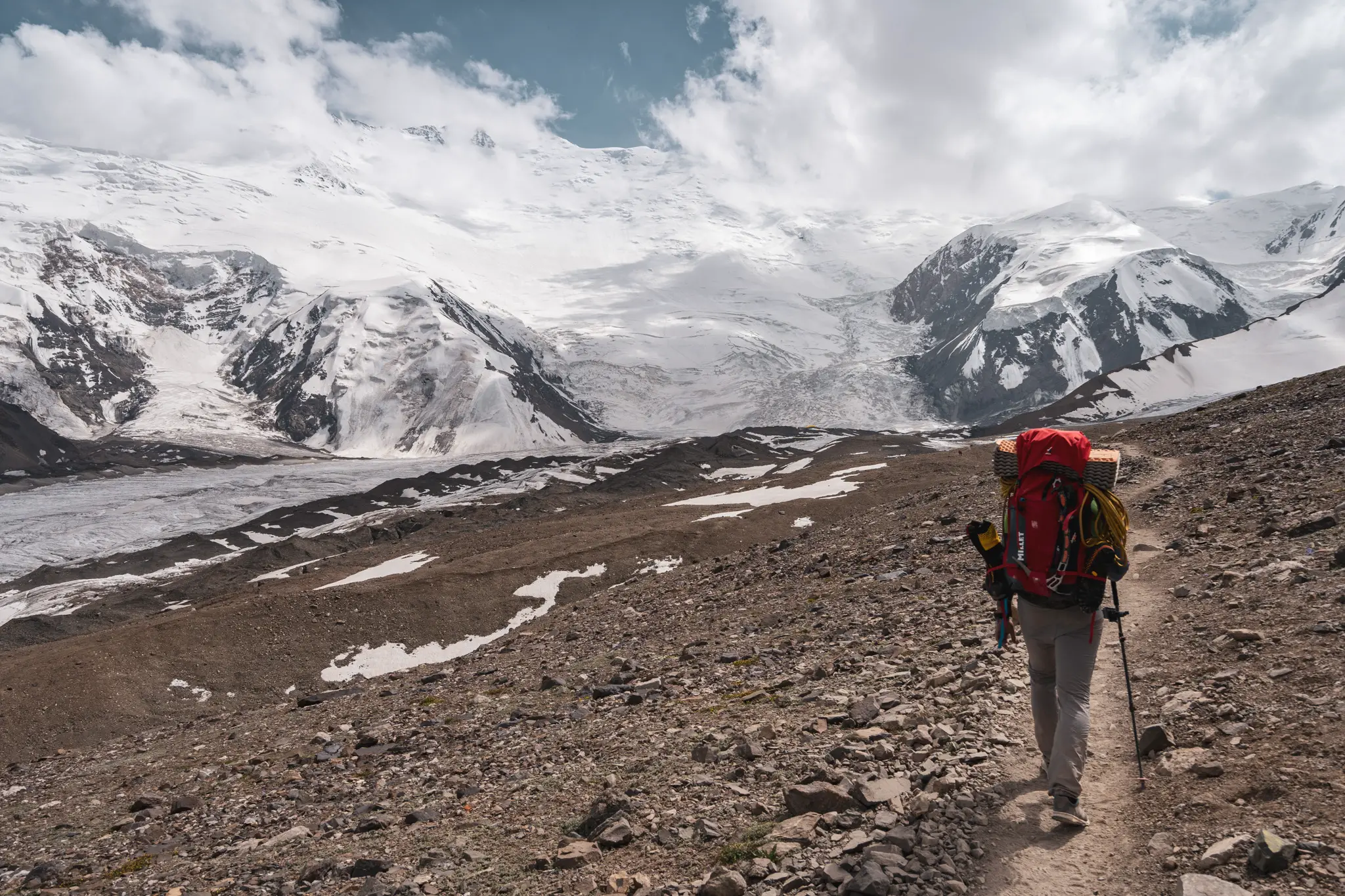
Lenin Peak Gear List
Here’s the gear I recommend for climbing Lenin Peak, based on a ton of research and input from other climbers. I am still working on the complete list.
| Gear Type | My Recommendation | Notes |
|---|---|---|
| Mountaineering Boots | La Sportiva G2 SM | Lightweight, and extremely warm. I've used these boots on Orizaba and Lenin Peak and have always had extremely toasty feet. |
| Crampons | Black Diamond Sabertooth Crampons | Great quality crampons that will fit the G2 SM boots perfectly. |
| Ice Axe | Black Diamond Raven Pro | Lightweight ice axe, all you need for climbing Lenin Peak. |
| Base Layers | Ice Breaker Merino Wool Top & Bottom | Warm, amazing quality, and very comfortable. |
| Mid-Layer Top | Mountain Hardwear Fleece | A classic mid-layer fleece - keeps you warm and dry. |
| Sunglasses | Julbo Explorer2 Sunglasses | Most popular mountaineering sunglasses, for good reason. Superb quality and will keep your eyes safe. |
Lenin Peak Climbing Routes
There are a number of different climbing routes on Lenin Peak. The most common, and safest is the classic route via Razdelnaya top. I’d guess that 99% of all summits occur via this route. When I was in Kyrgyzstan, I didn’t meet any climbers attempting other routes.
Other routes include the route via Lipkin Rocks, via the Krylenko Pass, or straight up the north face.
The Razdelnaya Route
The Razdelnaya Route is the most common route used to climb Lenin Peak. Let’s go over the different stages and camps on the route.
Base Camp (3,600 m)
Lenin Peak’s Base Camp is located in a gorgeous meadow at 3,600 meters above sea level. It’s accessible by road, so amenities here are quite good.
The larger agencies operating Base Camps typically have dining yurts, spacious tents for climbers, hot showers, a storage room, and even a sauna. There is even electricity and WiFi (for a fee).
Overall, Base Camp is a pretty comfortable place – especially if you’ve just come from one of the higher camps. Temperatures are quite hot during the daytime, and the air isn’t too thin.
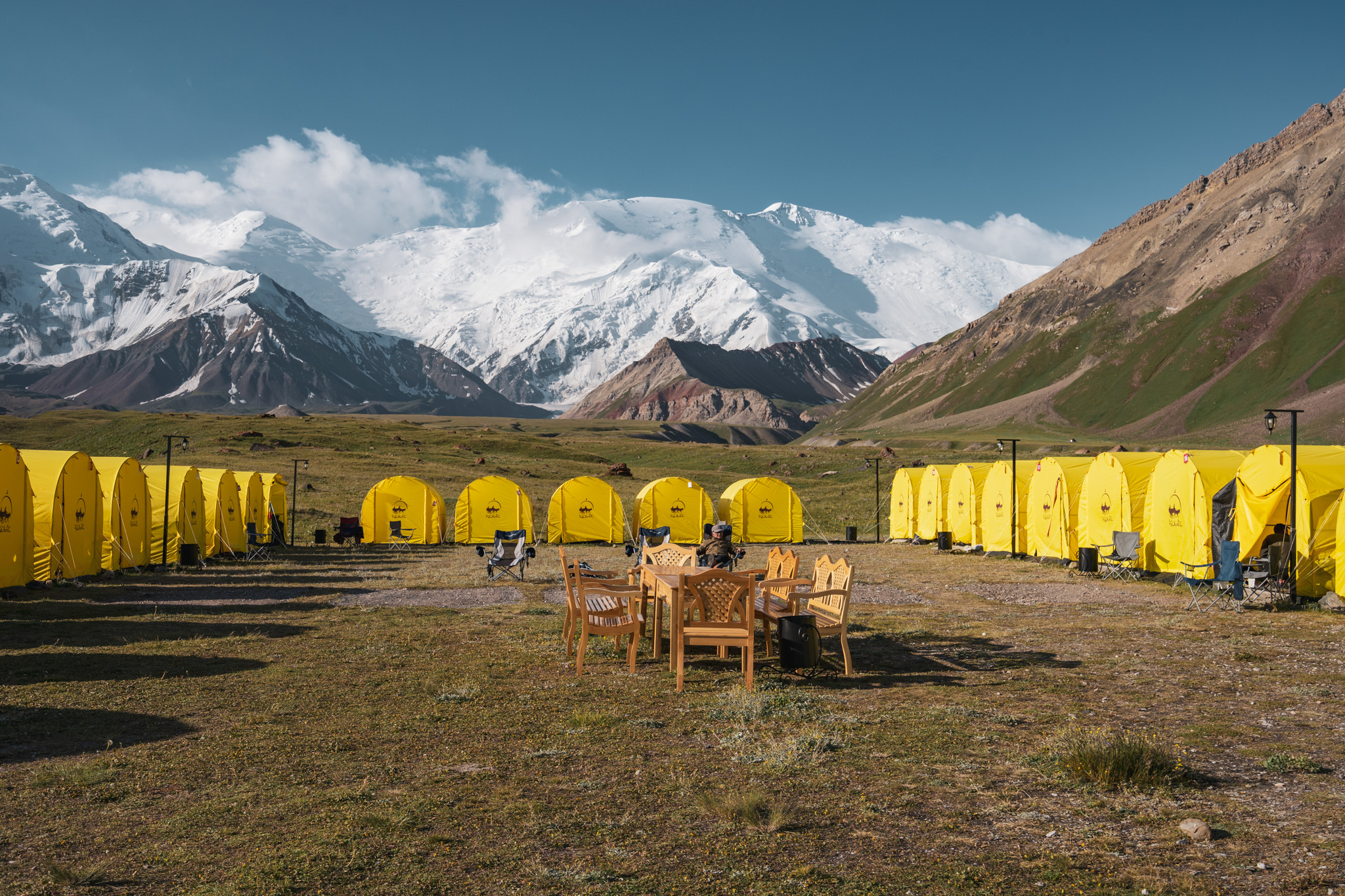
Hiking from Base Camp to Camp 1
The route from Base Camp to Camp 1 is basically just a hike – the trail is well defined, and it’s all on gravel until just before you reach Camp 1.
Departing from Camp 1, things are pretty flat until you reach the beginning of the Traveller’s Pass. The ascent up to the top of the pass is your first challenge. It’s all worth it though – when you get to the top you’ll have an incredible mountain panorama right in front of you.
Have a quick snack at the top of the pass, and then continue towards Camp 1. The next part of the route is straightforward, with a few ups and downs along the way.
Eventually, you’ll arrive at the first and largest river crossing. The water level will vary depending on the time of day, being at its lowest in the early morning. You can cross the river yourself if you’re experienced with river crossings, or pay a local for a ride across on a horse. About 200 som is the going rate for a ride across, although you need to negotiate as initial quotes were usually around $10.
Climb back up from the river, and you’ll be quite close to Camp 1. There are signs around here pointing you in the direction of your Camp 1 depending on the agency you’re climbing with.
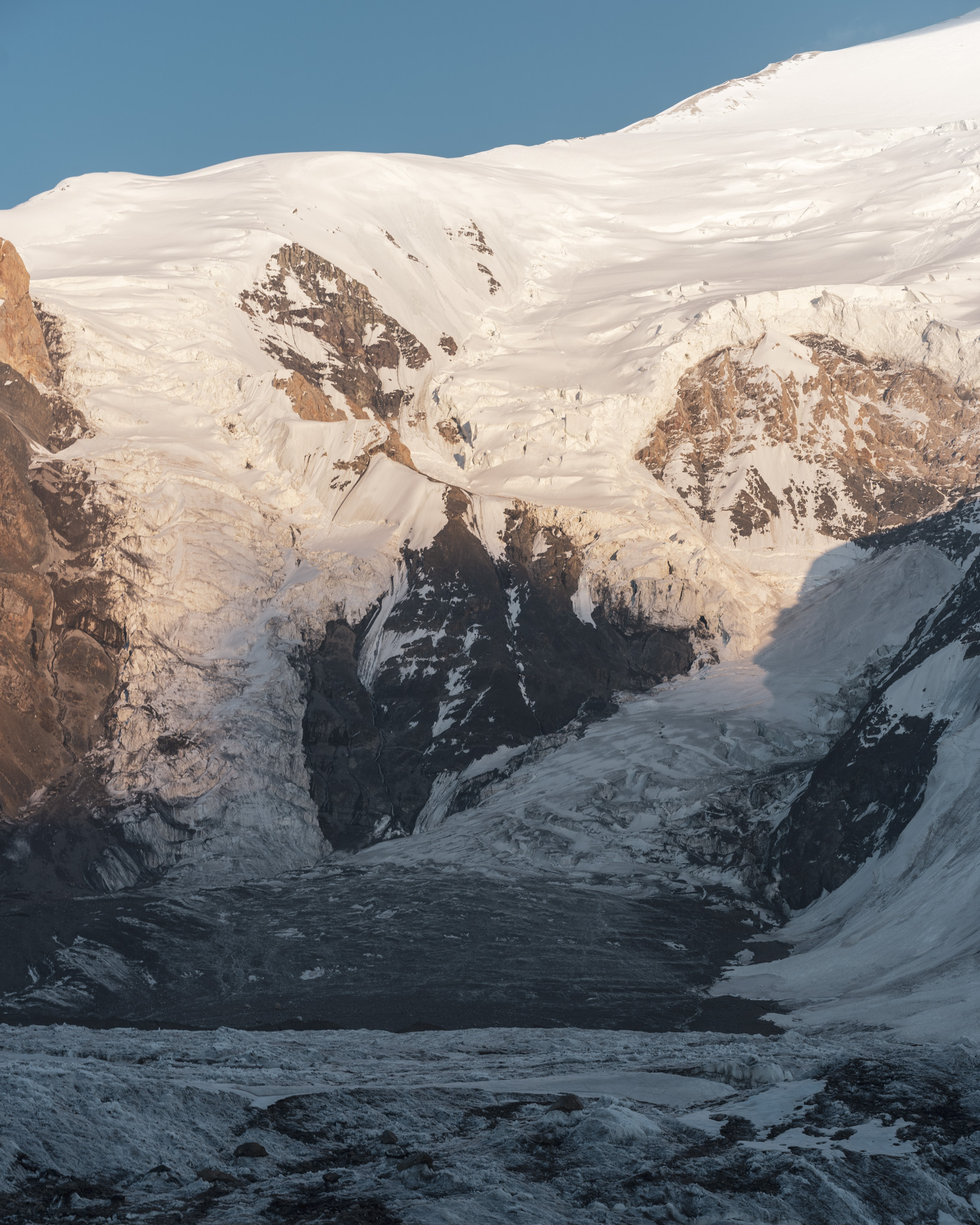
Camp 1 (4,450 m)
Considering its location, Camp 1 is also quite well serviced by most Lenin Peak climbing agencies.
Camp 1 is located on or at the edge of the glacier that flows off of the northern face of Lenin Peak. You’re surrounded by mountains here, and Lenin Peak’s scale really begins to come into perspective.
The camps here are usually spacious two-person tents, and the meal area is inside of a yurt.
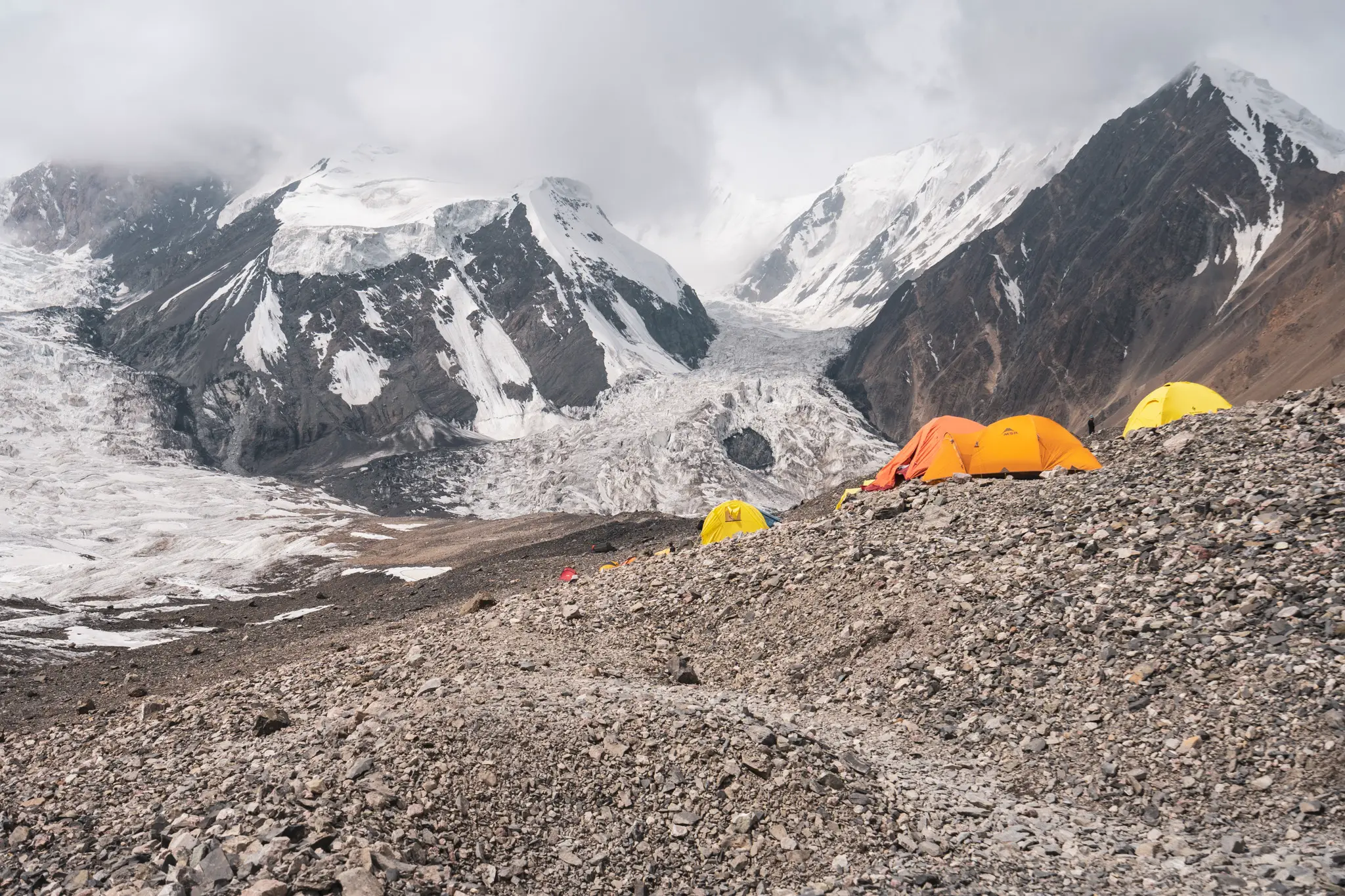
Climbing from Camp 1 to Camp 2
The route from Camp 1 to Camp 2 is the dangerous part of the climb. You’ll have to pass over a number of large crevasses, and then spent a short amount of time walking through an area that’s susceptible to avalanches.
It’s advised to start early for this section – most people begin climbing around 4:30 am. The crevasses are smaller when the temperature is cooler.
There are snow bridges to walk across for most crevasses, and there are fixed ropes that you can clip into for the more dangerous ones.
After passing the crevassed area, you’ll get a look at Camp 2. It’s not to far away now – but try to go quickly as this area just before Camp 2 has a high avalanche risk.
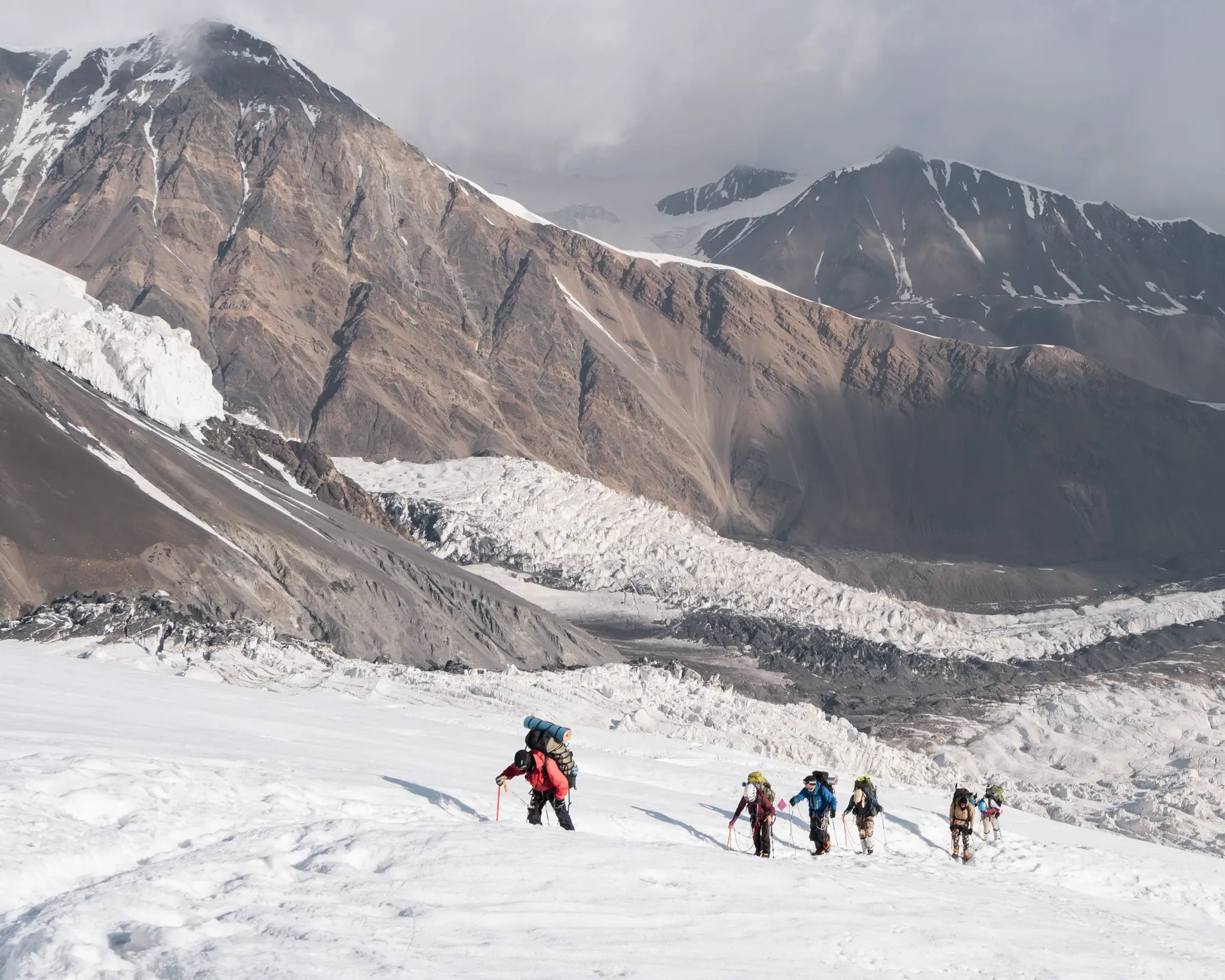
Camp 2 (5,450 m)
Camp 2 is probably the most miserable place I’ve ever had to spend a night.
It’s located in a giant bowl of reflective ice, and daytime temperatures inside of tents at Camp 2 can reach upwards of 50°C. You’ll see people walking around in shorts and t-shirts and tents covered by sleeping bags in an attempt to keep out the sun. At night, temperatures plummet and you better get ready to put all of that gear back on.
The toilet situation here is also quite dire – there’s just a tiny wall of snow to hide you from the entire camp, and the route to the toilet area is surrounded by crevasses. It is seriously dangerous to try to go there at nighttime.
One plus – there is running water during the daytime at Camp 2. A bit above the camp, there’s a small stream created from melting snow, so you can get water there to save your precious gas canisters.

Climbing from Camp 2 to Camp 3
The route from Camp 2 to Camp 3 is quite straightforward, but you’ll definitely be feeling the altitude from this point on.
Leaving from Camp 2, you’ll begin an upwards climb right away. This section is a bit steep, but nothing too bad.
After topping out, you’ll get a glimpse of the next uphill section. It’s longer and can take a long time to get up. But good news – at the top of the second uphill, you’ll be in Camp 3!
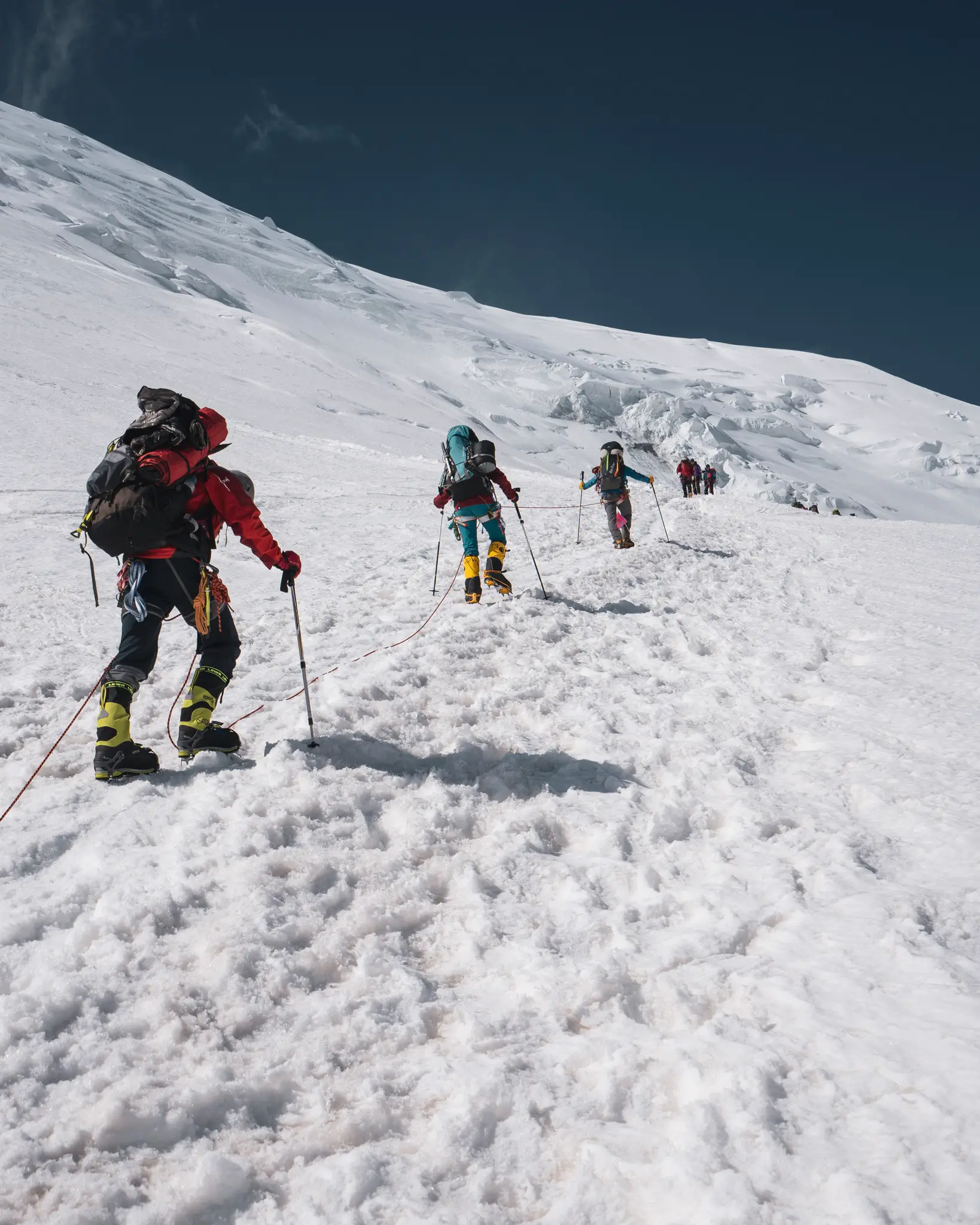
Camp 3 (6,100 m)
Camp 3 is located near the summit of Razdelnaya Peak. It’s very exposed and can get pretty windy. But you don’t have to worry about the heat like at Camp 2.
At Camp 3, you’ll also get gorgeous views of Tajikistan’s Pamir Mountains, a great reward for making it this far.
Climbing from Camp 3 to the Summit
I personally haven’t attempted the route from Camp 3 to the summit.
From what I was told by climbers who did attempt it, it’s a long journey. You ascend over 1000 meters and travel a horizontal distance of about seven kilometers. You’ll follow a ridge most of the way, so it’s not too hard to stay on track if the weather is good.
Depending on your level of fitness and acclimatization, the summit push can take anywhere from 8 to 24 hours. Most climbers I met were in the middle of that range.
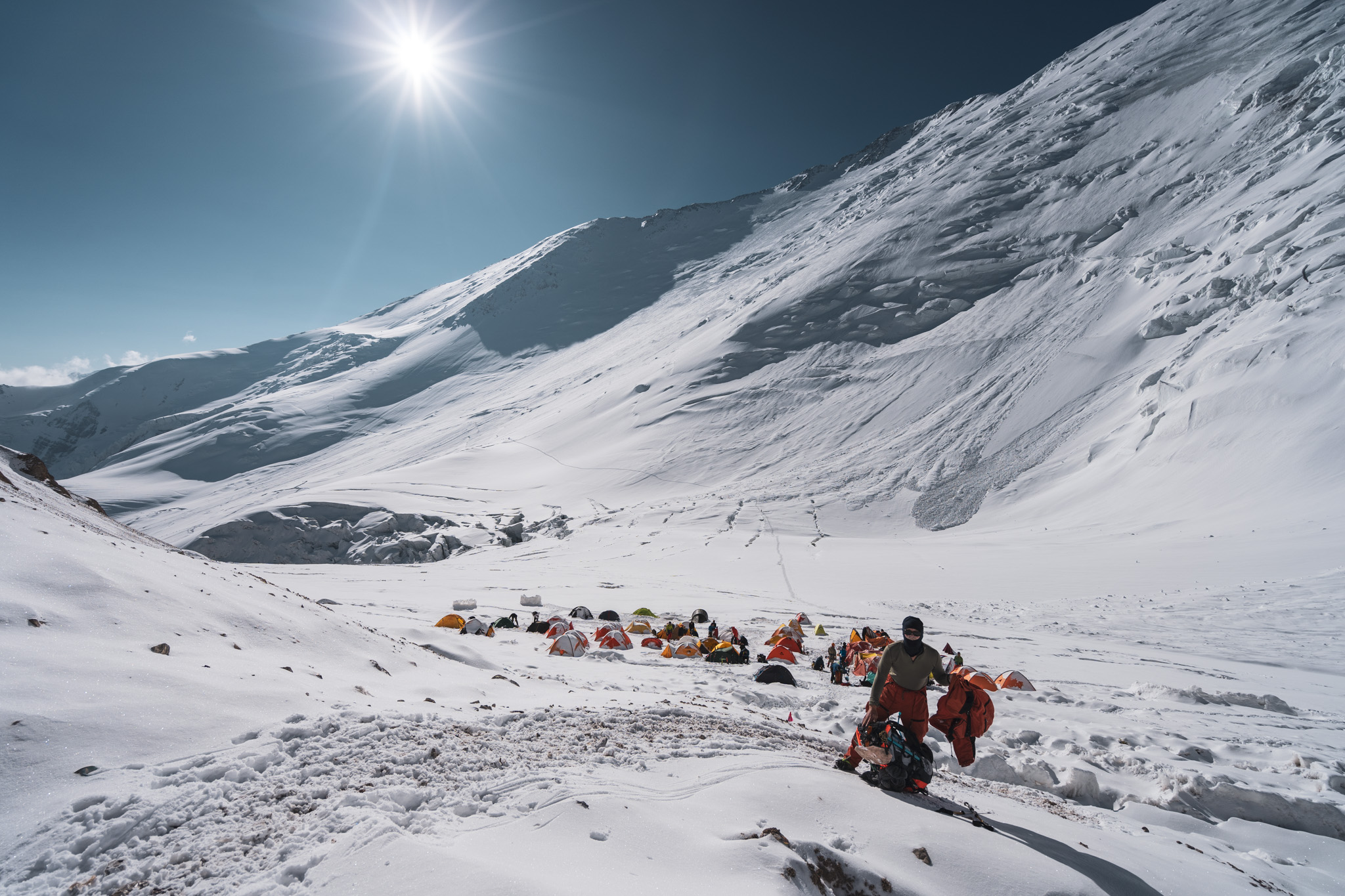
Summit (7,134 m)
I haven’t stood here (yet…), so I can only go by reports that I heard on the ground.
Lenin Peak’s summit is located on a large plateau and it can be difficult to find if the weather isn’t great.
But the view from the top is amazing, apparently. If you’ve made it this far, you’re a badass.
Solo Climbing Lenin Peak
It’s totally possible to solo climb on Lenin Peak if you have enough experience. If you have enough experience to make a solo attempt on a 7,000-meter peak, you probably already know.
Solo climbing is definitely more dangerous than climbing with a group, especially when climbing between Camp 1 and Camp 2. Falling into a crevasse and disappearing forever is a real possibility.
When you’re solo, you also won’t be able to tell if you’re succumbing to a High Altitude Cerebral Edema (or HACE). It can happen suddenly, and if you’re alone on your summit bid when it does then that’s a really bad situation to be in.
I climbed solo but tried to stick with other solo climbers on the dangerous stretch between Camp 1 and Camp 2.
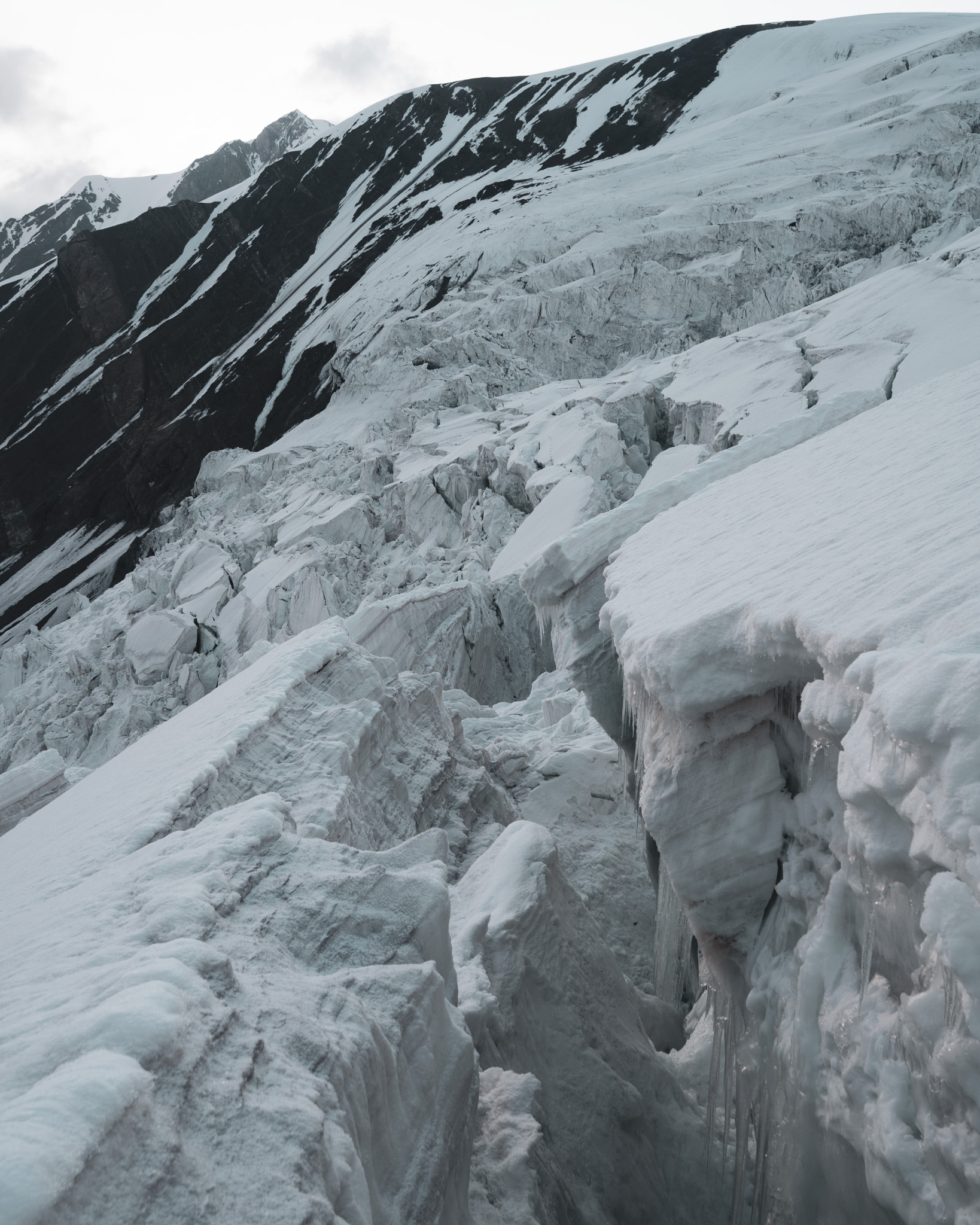
Lenin Peak Acclimatization Itinerary
Climbing Lenin Peak normally takes about three weeks, due to the amount of time needed to acclimatize its extreme altitude. Here’s a sample climbing & acclimatization itinerary for Lenin Peak:
| Climbing Day | Route Description |
|---|---|
| Day 1 | Transfer from Osh to Base Camp (3,600 m) |
| Day 2 | Rest day in Base Camp |
| Day 3 | Hike higher near Base Camp, or do a load carry to Camp 1. Sleep in Base Camp. |
| Day 4 | Hike from Base Camp to Camp 1. Sleep in Camp 1 (4,450 m). |
| Day 5 | Rest day in Camp 1, consider acclimatization hike up Yukhin Peak (5,1350m) if feeling good. |
| Day 6 | Climb from Camp 1 to Camp 2. Sleep in Camp 2 (5,450 m). |
| Day 7 | Climb from Camp 2 to Camp 3, then descend to Camp 2. Sleep in Camp 2 (5,450 m). |
| Day 8 | Descend from Camp 2 to Base Camp. Sleep in Base Camp (3,600 m). |
| Day 9 | Rest day in Base Camp. |
| Day 10 | Rest day in Base Camp. |
| Day 11 | Hike from Base Camp to Camp 1. |
| Day 12 | Climb from Camp 1 to Camp 2. |
| Day 13 | Climb from Camp 2 to Camp 3. |
| Day 14 | Summit push and return to Camp 3. |
| Day 15 | Descend from Camp 3 to Camp 1. |
| Day 16 | Descend from Camp 1 to Base Camp |
| Day 17 | Reserve day. |
| Day 18 | Reserve day. |
| Day 19 | Transfer from Base Camp to Osh. |
The above itinerary is similar to what most climbers on the mountain follow. It has a couple of reserve days, in case you aren’t feeling good with the altitude or get food poisoning.

Lenin Peak Climbing Season
Unless you’re a professional climber, you’ll be climbing Lenin Peak during its normal climbing season. The season is short, running only during July and August.
You might be wondering – is it better to climb in July or August? There’s no simple answer, and both months have decent weather.
In July, there will be a lot more snow on the mountain, and the crevasses between Camp 1 and Camp 2 will be smaller. In August, much of the snow has melted but the crevasses open up quite a bit.
In late August, things will start to get a bit colder. I climbed in late June and early August – most days had good weather and there were a decent number of summits.

Lenin Peak Agencies
Unless you really know what you’re doing, you’ll likely want to organize your Lenin Peak climb with one of the numerous agencies that can provide you with logistical support.
Most agencies have different levels of service offerings. The base offer normally includes permits and use of their BC, but after that, you’re on your own.
The most common level of service I saw used (and what I used myself), includes room and board at BC and C1. It also includes transportation to/from Osh to BC as well as climbing permits.
The two largest agencies that operate on Lenin Peak are Ak Sai and Central Asia Travel. They’ve both got a ton of different service offerings, so I’d recommend checking out their sites for more information.
I climbed with Central Asia Travel and had a good experience overall. Staff at BC and C1 were wonderful, shoutout to Nurdanat, Icy, and Dima 🙂
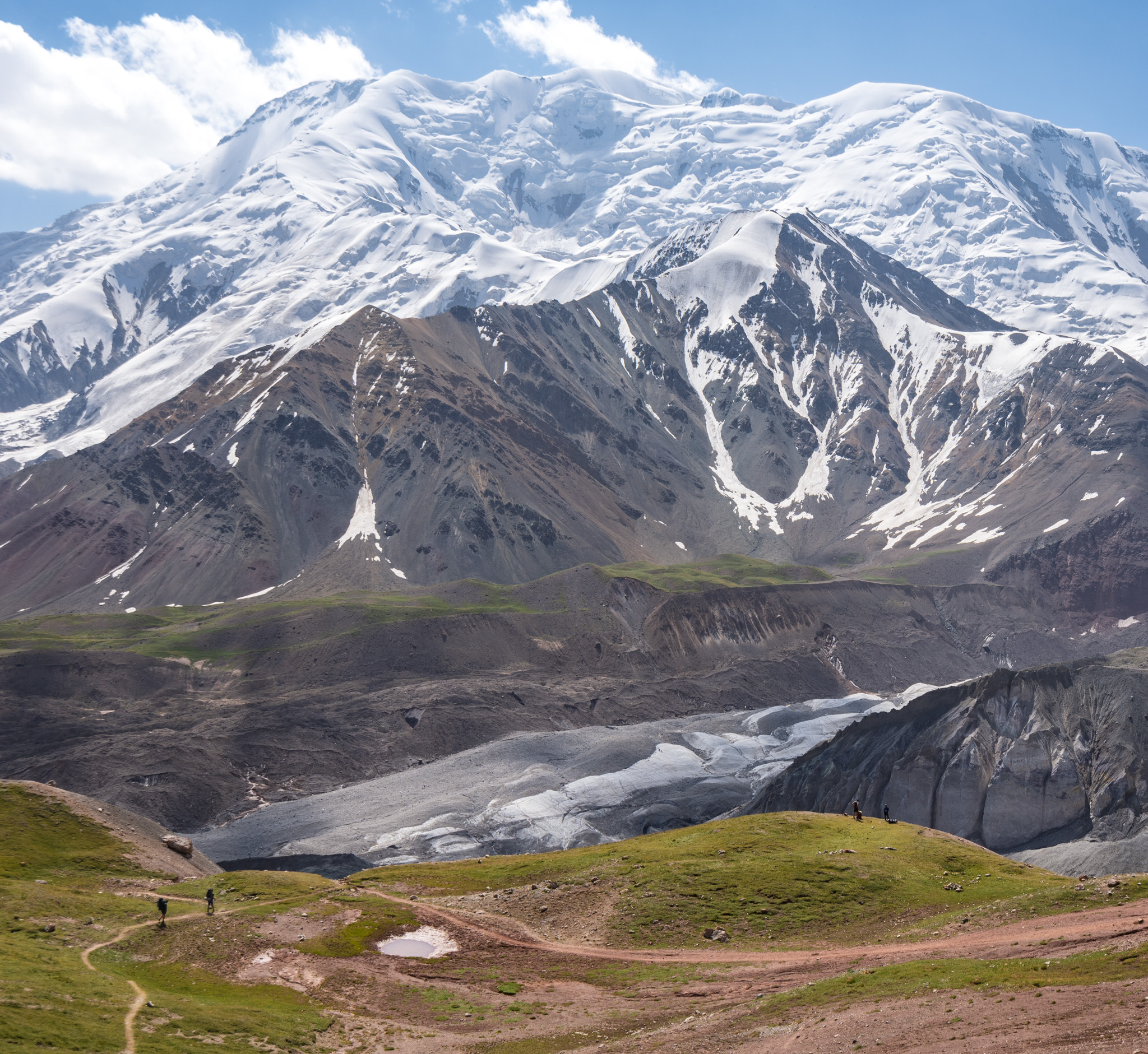
Lenin Peak FAQ
How tall is Lenin Peak?
Lenin Peak has an elevation of 7,134 meters.
What is the weather like on Lenin Peak?
The weather on Lenin Peak is all over the place, but it is consistently cold as hell. Lenin’s summit is frequently blasted by 100km+ winds, and snowstorms are frequent.
There’s a general rule that mornings will have clearer skies, and in the afternoon things will begin to get cloudy.
Your best bet is to keep updated with the weather forecast from BC while you’re climbing on the mountain.

Can you ski on Lenin Peak?
Yes! I saw a few skiers while I was there. It’s definitely not easy to ski at these altitudes, so some experience in high altitude skiing would be necessary.
What’s the success rate for climbing Lenin Peak?
Apparently, the success rate for climbing Lenin Peak is about 30%. It honestly wouldn’t surprise me if this figure was even lower.
Is there internet access at Lenin Peak?
The larger climbing agencies offer WiFi at BC and C1, for a fee. With my agency prices were $10 for 300mb at BC and $15 for 300mb at C1.
If you buy a local SIM card when you arrive in Kyrgyzstan, you can get 3G signal in BC. I recommend getting a SIM from the O! telecom – it’s what I used and it worked great. Prices are around 250 som ($3.5) for 40GB of internet.

Resources for climbing Lenin Peak
You’re probably going to want to do a lot of research before you head to Kyrgyzstan, so let me help you out with some resources that I found helpful when planning my climb.
- Lenin Peak SummitPost – SummitPost is a great mountaineering resource, and the page on Lenin Peak is quite useful even if it’s a bit outdated in certain sections.
- Lenin Peak info from Central Asia Travel – This is the agency that I climbed with and mentioned earlier on in this article. They have some great info on the route and preparing for your climb.
- Climbing Lenin Peak from The Sandy Feet – Chris has written up some great info on the climb.
- Lenin Peak Trip Report from TheCloudOcean – Ian has some great trip reports on his site.

Lenin Peak Wrap-up
I hope this post has helped you plan your Lenin Peak climb! It’s a challenging mountain, but even if you don’t make it to the summit the views are magnificent. Feel free to ask me if you’ve got any further questions about the climb!
Good luck and stay safe!
Check out my guide to travelling in Kyrgyzstan for more useful info to help plan your trip.
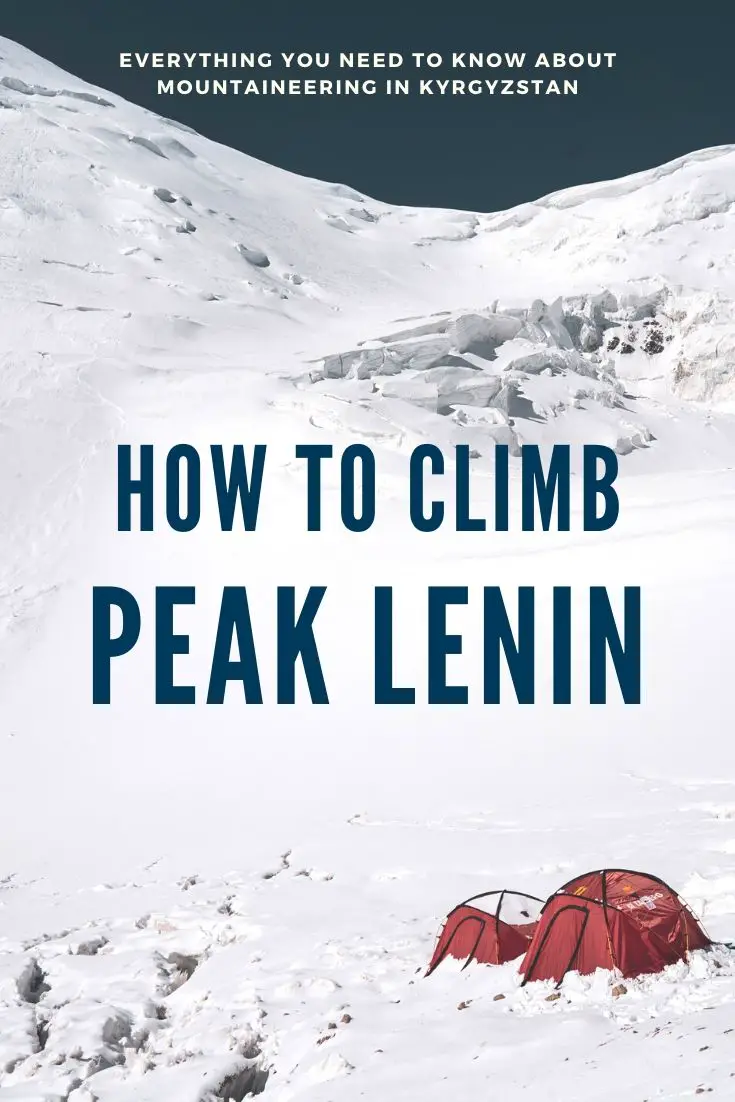
Yay transparency! There are affiliate links in this guide. If you book or buy something using my links, I’ll make a bit of money at no extra cost to you.
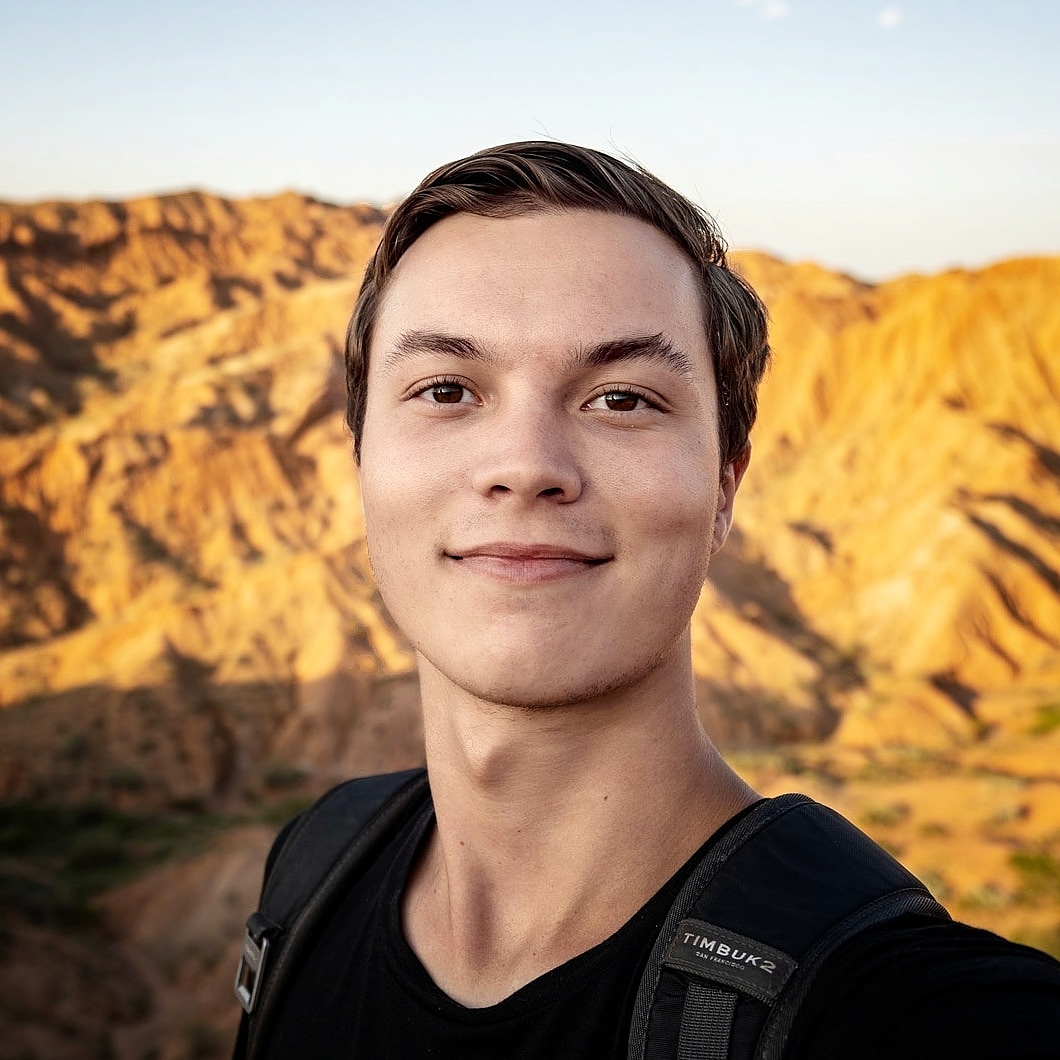
21-year old Canadian dude who loves to visit off-the-beaten-path places, climb tall mountains, and try delicious foods.
